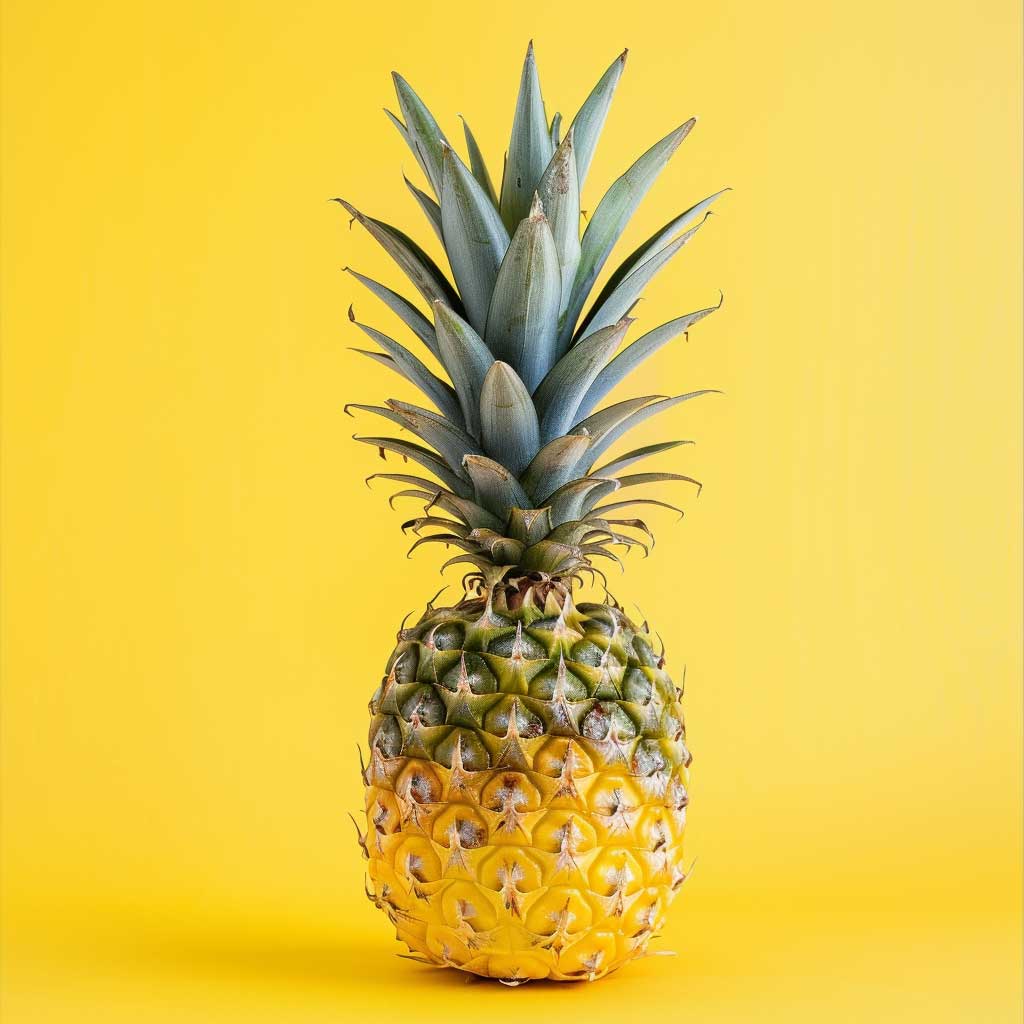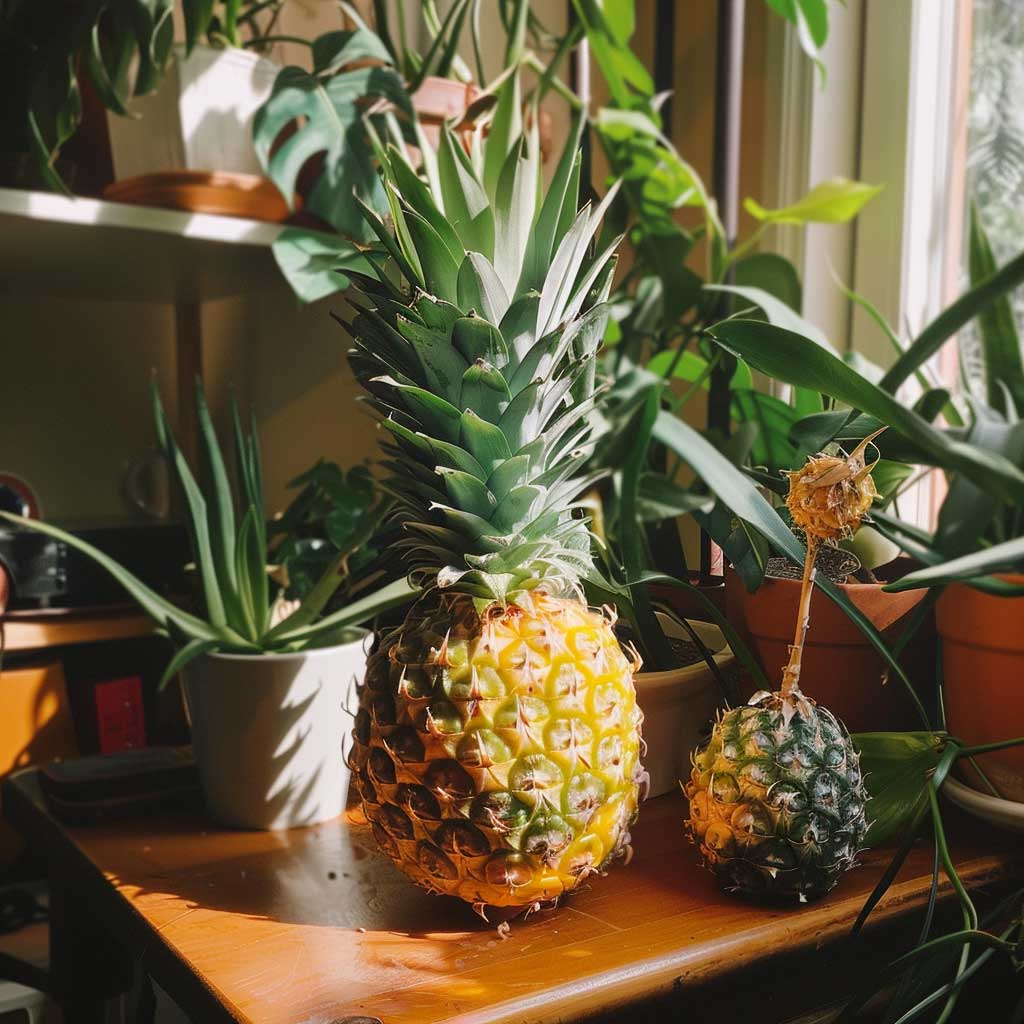
Pineapple, with its tantalizing taste and remarkable versatility, stands as a culinary delight appreciated in various forms: from standalone enjoyment to enhancing both savory dishes and delectable desserts. Recognized by its iconic pine cone shape, resilient exterior, and the unique blend of sweet and tangy flavors, this fruit has charmed palates worldwide.
The English term “pineapple” traces back to 1398, originally referring to the reproductive organs of conifer trees. However, its name finds its roots in the Tupi language of South America, where “ananas” signified “excellent fruit.” Despite its long history spanning over 600 years, this tropical gem continues to hold an aura of intrigue. Delve into these 10 captivating pineapple facts!
1. Its origin might surprise you.
While Hawaii is often associated with pineapple, its status as a major production center was relatively brief during the 20th century. According to Smithsonian, the pineapple’s origins trace back to the area where Argentina, Paraguay, and Brazil intersect. Although American companies boosted pineapple cultivation in Hawaii from approximately 1900 to 1960, introducing the fruit to the U.S. market, today only a fraction, just over 10%, of the pineapples consumed in the U.S. are grown in Hawaii. Improved transportation and refrigeration have facilitated sourcing from countries such as Costa Rica, the Philippines, Indonesia, and Brazil, which now dominate pineapple production.
2. It’s gradually gaining popularity as one of America’s preferred fruits.
Despite not attaining the widespread appeal and presence of bananas and apples, pineapples are steadily capturing America’s interest. McKeany-Flavell, a commodity-tracking firm, reports that the average American consumes approximately 8 pounds of fresh pineapple annually, along with 2 pounds of canned pineapple. This figure excludes pineapple juice, dried pineapple, and other pineapple-containing products like certain baked goods.

3. It tends to favor the long-term approach.
The journey from seed to ripe pineapple is a patient one, spanning up to three years for a pineapple plant to reach full maturity and begin fruiting. Once the plant bears fruit, it takes an extra year for each individual pineapple to ripen and become edible. While pineapple plants typically yield only one fruit at a time, they boast an extensive lifespan, with some living up to 50 years and producing as many as 50 pineapples during their lifetime.
4. It’s ready to be harvested.
In contrast to fruits like tomatoes or strawberries, whose color shifts as they ripen, the hue of a pineapple’s skin holds no significance regarding its ripeness once sliced open. According to pineapple expert Dole, you can determine the ripeness of a pineapple by examining its individual spikes. “The flatter the skin, the riper the fruit,” advises the company.
5. It’s just what the doctor ordered
For centuries, the tropical fruit has been employed to alleviate digestive issues and various other ailments. Rich in a naturally occurring enzyme known as bromelain, it is utilized in modern times to address inflammation stemming from burns, wounds, and other injuries.
6. It’s not a good match with dairy.
Scientific American conducted an experiment involving pineapples and milk. The study revealed that the proteolytic enzyme in bromelain can degrade proteins such as casein found in dairy products, resulting in a bitter taste. The longer the pineapple and dairy are in contact, the more pronounced the bitterness becomes. In essence, it’s not ideal if you’re planning to combine fresh pineapple with cream cheese, whipped cream, or non-dairy desserts. If you do choose to mix pineapple with dairy, it’s advisable to consume the dish promptly to minimize the risk of bitter flavors emerging.
7. It’s an excellent choice for indoor gardening.

Absolutely! According to the gardening experts at HGTV, transforming a pineapple into a houseplant is a straightforward process. Start by carefully removing the spiky green crown in one smooth motion, akin to twisting a wet towel. Once detached, allow the crown to dry out and “cure” for several days; avoid immediately submerging it in water, as the objective is not to initiate root growth right away. Then, trim off the bottom few leaves to expose the stem. Prepare a spacious pot with high-quality soil, create a small hole in the center, and plant the pineapple top. That’s all there is to it! Position the pot in a well-lit area, water the top regularly, and in approximately two months, your new pineapple plant should successfully take root and flourish into a thriving addition to your home.
8. It was formerly regarded as a symbol of luxury and affluence.

Christopher Columbus is credited with introducing pineapples from Guadeloupe to Europe during his voyages in the 1490s. This exotic fruit quickly captured the attention of Spain’s monarchs, becoming a coveted delicacy. By the 17th century, pineapples became more accessible, but they remained a luxury item reserved for the elite, including figures such as Louis XV, Catherine the Great, and Charles II. As late as the 1700s, imported pineapples from the Caribbean commanded astonishing prices, occasionally reaching the equivalent of $8,000 in today’s currency.
9. It also symbolizes hospitality.
Due to their remarkable value, pineapples were frequently employed as the focal point for grand feasts and festivities as more individuals gained the means to acquire them. For those unable to afford their own, pineapples could even be rented for special occasions. In the early 1900s, the gesture of bringing pineapples to the homes of loved ones as a gesture of affection and hospitality became popular. This practice ultimately contributed to pineapples emerging as a ubiquitous motif in home décor, depicted in wood carvings, adorning bowls and dishes, and prominently featured in artwork—a tradition that endures to this day.
10. It’s a highly debated pizza topping.

While pineapple finds favor as a cocktail ingredient, grilled delicacy, salad addition, or component of Chinese cuisine, its most celebrated—and divisive—role is arguably on Hawaiian-style pizza. Surprisingly, this concept didn’t originate on any Pacific island; rather, it emerged in the quaint Canadian town of Chatham, Ontario. According to BBC News, Greek-born pizzeria owner Sam Panopoulos decided to experiment with pineapple as a pizza topping in 1962 out of sheer curiosity. The unconventional creation swiftly gained popularity, spreading from Canada to the United States and beyond, solidifying pineapple (alongside anchovies) as one of the most contentious toppings for America’s beloved dish.
